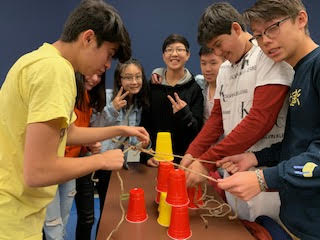Conduct an electricity audit and learn small actions to help protect the planet.
PURPOSE
Keen on decreasing your carbon footprint but not sure where to start? Why not start with electricity since it is one of the easiest and simplest places to begin.
GRADE LEVELS
4-6
SUBJECTS
Science
Social Studies
Math

SKILLS DEVELOPED
Critical Thinking
Problem Solving
Creativity and Innovation
MATERIALS NEEDED
Pen/pencil and clipboard
Calculator
DIY draft detector (tissue paper and pencil)
Fridge thermometer
TIME
15 minutes x 4 audits
Instructions
In this activity, you will look at different items around your home to figure out where you can take small actions to be more energy-efficient.
Part 1: Lighting
What type of light bulbs are in your home? Which one is better for the planet?
- Write out the different types of lights that you have in your home into the worksheet.
- How many are very efficient (uses the least amount of electricity)? How many are not efficient?
Part 2: Outlets and Electronics
Some electronics use electricity even when they are OFF! This is also known as phantom energy… Spooky! Tally up the number of outlets and various electronics in each room in your home in the worksheet. Which ones do you think are using phantom energy?
Tips for getting rid of phantom energy:
- Make sure computers are fully shut down rather than just put to sleep – sleepy computers still use energy!
- Use a power bar for your electronics
- Try to purchase electronics that use minimal to no phantom energy!
Part 3: Doors and Windows
Ever feel cold air coming in from the windows and doors even though you just closed them? That’s called a draft. Seal up those doors and windows to make it easier for your home to stay warm!
- Make a DIY draft detector by taping tissue paper to a pencil (it should look like a flag!)
- Hold the draft detector in several locations around the edges of entrance doors and windows. The tissue will wave when touched by a draft.
- Record the direction your window/door is facing and input your answers in the worksheet. Why does the direction of matter?
** Be careful not to be misled by drafts from nearby heating vents or air currents.
How can you prevent cold air from getting in?
- SOUTH facing windows get the most sunlight, saving you in home heating in winter. NORTH facing windows get the least amount of sunlight so cover them with curtains to retain heat in winter.
-
Seal up your home using weather stripping or caulking which minimizes heat loss and the electricity or natural gas needed to keep your homes warm.
-
Weatherstripping is made of foam or vinyl and creates a seal by squishing against both the door and frame when the door is closed.
-
Caulking is a bendy material that goes on windows and doors as a thick liquid and sets in place to seal cracks.
-
Part 4: Refrigerators
Many fridges are set too cold and that wastes energy! On the other hand, some fridges are not cold enough, therefore food goes bad and must be thrown out! Use a fridge thermometer to find out if school fridges are at the “goldilocks” temperature. The “goldilocks” temperature for your fridge is 0-4°C. For your freezer, it is -18°C.
- Place a thermometer in your fridge or freezer and wait 10 minutes.
- Read the thermometer and record your answers in the worksheet. Is your fridge too cold? Or not cold enough, therefore, leading to increased risk of food spoilage?
- Change the temperature if necessary.
This activity was made possible thanks to Energy Efficiency Alberta
More Bring Nature Home for Families
Bring Nature Home is our online database of tried-and-tested CPAWS Southern Alberta activities! Here are some ways that you can bring nature home (or to the classroom) today!

Rock, Paper, Scissors, Frog!

Climate Action With Cups




